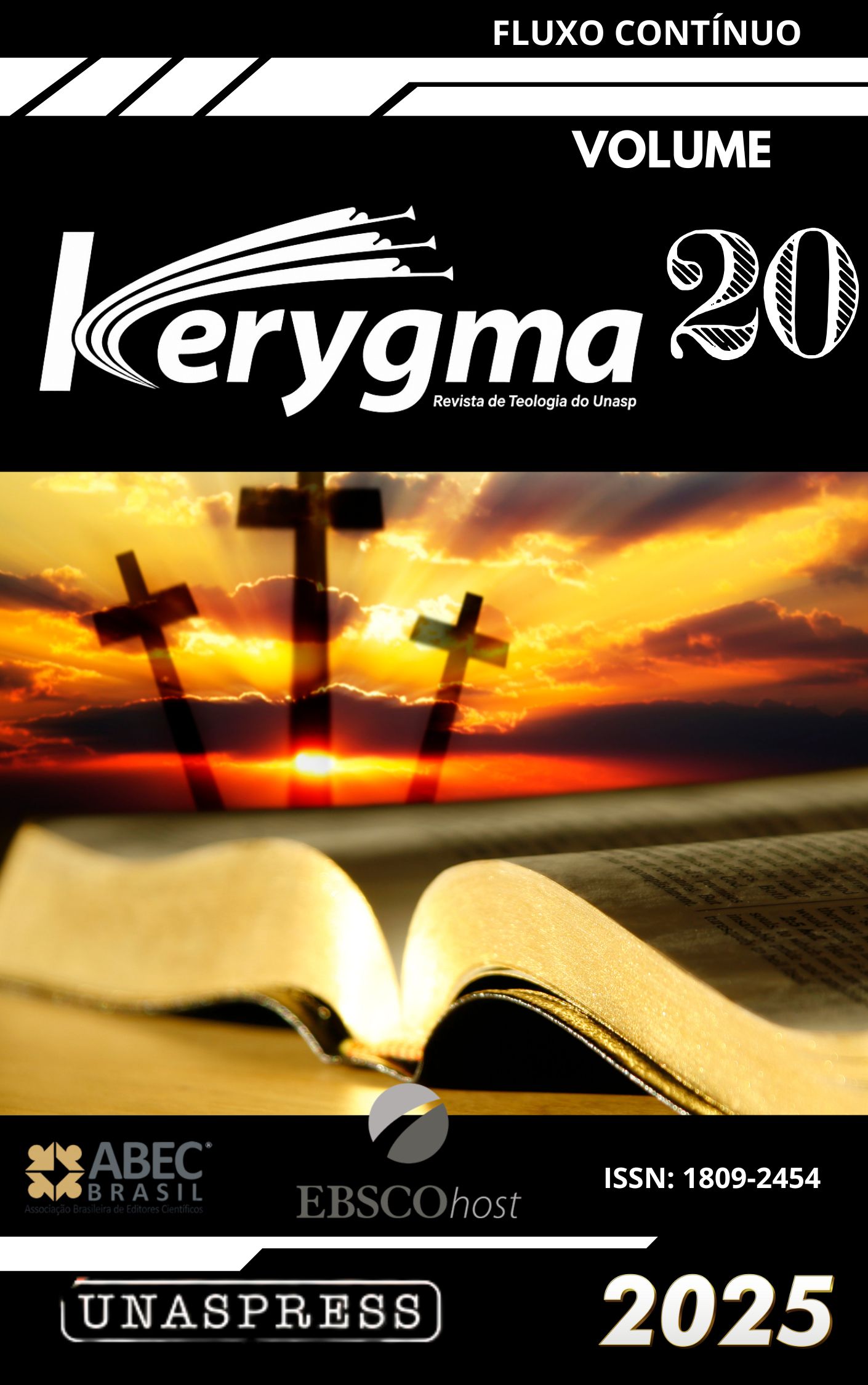Resumen
Los intérpretes en general consideran que Babilonia es recordada por Dios durante el transcurso de la séptima copa de la ira (cf. Ap 16:19). Después de eso, Dios derramaría sobre ella su ira. Sin embargo, según Apocalipsis 15:1 y 16:17, la ira de Dios queda completamente satisfecha a lo largo de las seis primeras copas y al derramarse la séptima "sobre el aire". Incluso antes de las teofanías de la séptima copa, Dios se declara satisfecho con la ejecución de sus juicios, con la declaración “¡Hecho está!” (Ap 16:17). Además, en la interpretación más común de esta unidad textual, se considera que Dios ha recordado a Babilonia para darle el cáliz de la ira después de que la “gran ciudad” se divida en tres partes o sea totalmente destruida, lo que sugeriría un anacronismo en esta sección (Ap 16:17-21). Las cuestiones de estructura y los aspectos lingüísticos deben ser analizados para aclarar el sentido de la visión de Apocalipsis 17 después de las siete plagas, y la relación que este relato mantiene con la visión de las siete plagas (Ap 16). Este artículo emplea una metodología exegética con análisis estructural en la búsqueda de más respuestas a estas cuestiones. La hipótesis defendida aquí es que Apocalipsis 17 no relata un evento posterior ni un desarrollo de la séptima copa, sino una explicación de las quinta y sexta plagas.
Citas
AUNE, D. E. Revelation 1-5. Dallas, TX: Word, 1997. (Word Biblical Commentary, v. 52a).
AUNE, D. E. Revelation 6-16. Nashville, TN: Thomas Nelson, 1998. (Word Biblical Commentary, v. 52b).
BEALE, G. K. The book of Revelation. Grand Rapids, MI: Eerdmans, 1999. (The New International Greek Testament Commentary).
BROWN, C. (ed.). The new international dictionary of the New Testament theology. V. 2. Grand Rapids, MI: Zondervan, 1978.
COLLINS, A. Y. The combat myth in the book of Revelation. Eugene, OR: Wipf and Stock Publishers, 2001.
CUSTER, S. From Patmos to paradise: a commentary on Revelation. Greenville, SC: BJU Press, 2004.
DORNELES, V. Adorai aquele que fez: a narrativa da criação e o clímax do grande conflito em Apocalipse 12 a 14. Revista Criacionista Brasileira, n. 100, 2019, p. 6-21.
FARRER, A. A rebirth of images: the making of St. John Apocalypse. Nova York: State University of New York Press, 1986.
FIORENZA, E. S. The book of Revelation: justice and judgment. Mineápolis, MN: Fortress, 1998.
JOHNSON, A. F. Revelation. In: GAEBELEIN, F. E. (ed.). The Expositor’s Bible Commentary. Grand Rapids, MI: Zondervan, 1981. v. 12.
KISTEMAKER, S. J. Revelation. Grand Rapids, MI: Baker Academic, 2001. (New Testament Commentary).
KOESTER, C. R. Revelation: a new translation with introduction and commentary. New Heaven, CT: Yale University Press, 2014. (The Anchor Yale Bible).
KRODEL, G. A. Revelation. Minneapolis, MN: Augsburg Publishing House, 1989. (Augsburg Commentary on the New Testament).
LARONDELLE, H. K. Armageddon: sixth and seventh plagues. In: HOLBROOK, F. B. (ed.). Symposium on Revelation, book 2: exegetical and general studies. Silver Spring, MD: Biblical Research Institute, 1992, p. 373-390. (Daniel and Revelation Committee Series).
LARONDELLE, H. K. Chariots of salvation: the biblical drama of Armageddon. Hagerstown, MD: Review and Herald, 1987.
LÉVI-STRAUSS, C. The structural study of myth. The Journal of American Folklore, v. 68, n. 270, p. 428-44, 1955.
METZGER, B. Breaking the code: understanding the book of Revelation. Nashville, TN: Abingdon, 1993.
MICHAELS, J. R. Interpreting the book of Revelation. Grand Rapids, MI: Baker, 1992.
MOUNCE, R. H. The book of Revelation. ed. rev. Grand Rapids, MI: Eerdmans, 1977. (The New International Commentary on the New Testament).
MUELLER, E. When the prophecy repeats itself: recapitulation in Revelation. Silver Spring, MD: Biblical Research Institute, 2015. (Biblical Research Institute Release, v. 14).
MURPHY, F. J. Fallen is Babylon: the Revelation to John. Harrisburg, PA: Trinity Press, 1998.
NICHOL, F. D. (ed.). Comentário bíblico adventista do sétimo dia. Tatuí, SP: Casa Publicadora Brasileira, 2014.
OSBORNE, G. Revelation. Grand Rapids, MI: Baker Academic, 2002. (Baker Exegetical Commentary on the New Testament).
PAULIEN, J. Armageddon at the door. Hagerstown, MD: Review and Herald, 2008.
PAULIEN, J. Decoding Revelation’s trumpets: literary allusions and the interpretation of Revelation 8:7-12. Berrien Springs, MI: Andrews University Press, 1988. (Andrews University Seminary Doctoral Dissertation Series, v. 11).
RICOEUR, P. The symbolism of evil. Boston: Beacon, 1963.
ROTZ, C. Revelation: a commentary in the New Testament. Kansas, AK: Beacon Hill Press, 2012.
SMALLEY, S. S. The Revelation of John: a commentary on the Greek text of the Apocalypse. Downers Grove, IL: InterVarsity, 2005.
STEFANOVIC, R. Revelation of Jesus Christ: commentary on the book of Revelation. 2. ed. Berrien Springs, MI: Andrews University Press, 2009.
THOMAS, J. C. The Apocalypse: a literary and theological commentary. Cleveland, TN: CPT Press, 2012.
WELLCOME, I. C. History of the second advent message and mission, doctrine and people. Yarmouth, ME: I. C. Wellcome, 1874.
WHITE, E. G. Notes of travel. Review and Herald, 25 nov. 1884.
WHITE, E. G. O grande conflito. 42. ed. Tatuí, SP: Casa Publicadora Brasileira, 2004.

Esta obra está bajo una licencia internacional Creative Commons Atribución 4.0.
Derechos de autor 2025 Kerygma

